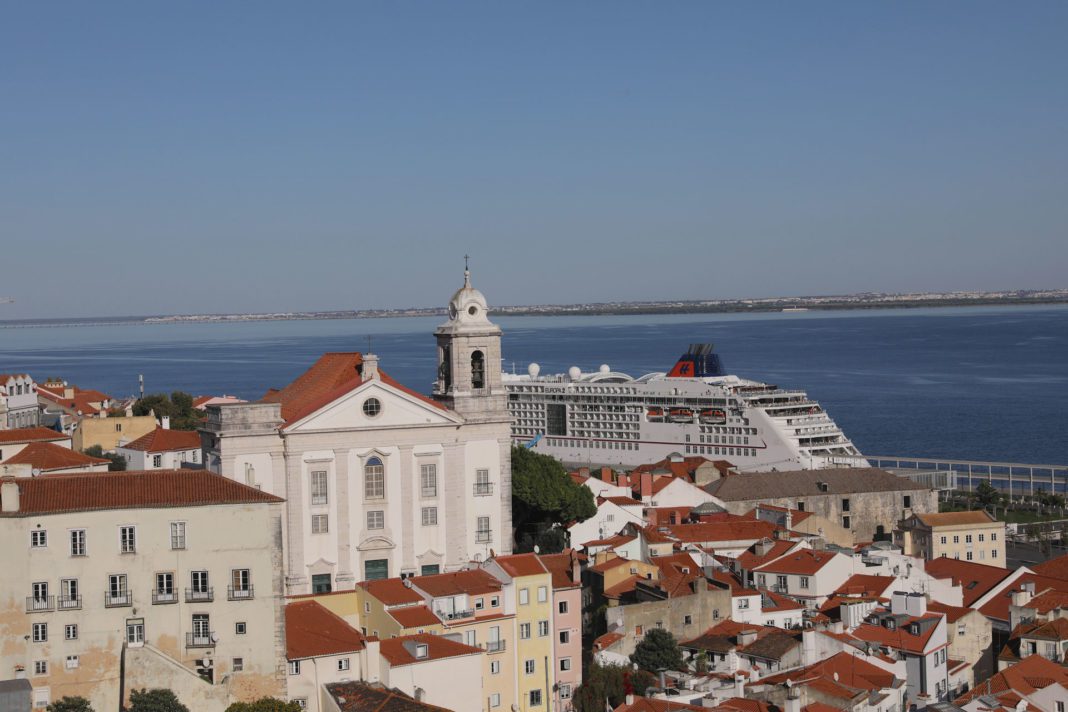Lisbon is a bustling metropolis with grandeur that includes architecture, statues and plazas. Cruise ships and multiple train stations prove the popularity of Portugal’s capital city. Yet with all the big-city cachet it offers, Lisbon also has many quaint pockets worth exploring – as that’s where the heart of the city truly pulses. The art district, for example, is resplendent, with details to focus on during guided tours. Get in the bohemian zone on a tuk-tuk tour for better access to the compelling, artistic alleys.
Riding in a tuk-tuk is a popular way of sightseeing. It’s a motorized, three-wheeled open vehicle that has a lid if needed. They are often available wherever taxis and Ubers are, and make you feel part of the city’s atmosphere, especially when the lid is open.
The art district can be viewed as you drive through neighborhoods of chapels, murals and musicians. Consider it a motorized art crawl as your tuk-tuk driver educates you about the significance of various murals and neighborhood trivia. This travel writer experienced the advantages of this form of transportation by being able to disembark at random to listen to an impromptu Fado concert.
Fado, a specific music genre associated with Lisbon, originated in the 1820s; it’s distinctly mournful and follows a traditional structure. Fado is believed to be connected to the word “fate” and often tells of the plight of sailors and laborers. Fado musicians prefer an organic experience; they rarely publicize performance dates and times. Witnessing a Fado trio set among eclectic art and sculptures is the quintessential Lisbon experience.
Alfama is the soul of the Fado music scene. The Moorish influence of Alfama is revealed in the architecture and marketplace. Castillos, cathedrals, souks and festivals are all part of the city’s charm. Zipping up and down the alleyways, you’ll be impressed by the vibrant murals and street mosaics. Portuguese art is some of the finest in the world – and this heritage has passed down to contemporary art as well. Imagine a mural that was completed in one day! Well, it exists right here in the art district.
Also in Alfama, you’ll see the traditional Portuguese paving stones turned into a portrait of singer Amália Rodrigues. Impressively, the mural curves with the street. Revolutionary Woman is another mural showcased which was painted by one of the most influential street artists, Shepard Fairey.
The Mirador lookout point is the breathtaking cityscape masterpiece – where people gather to marvel at the sweeping vista of Lisbon. Richly saturated colors of pastels and jewel-toned buildings on rippling hillsides are adorned by massive bougainvillea, draping off the red tile roofs. The scent of something cooking nearby will attract your attention when you notice vendors in the streets selling warm chestnuts right off the grill.
People savor their time in the city streets, as Portugal is reportedly the third safest country in the world. The seawall has a very communal spirit of people enjoying the atmosphere and dipping their feet in the ocean. When you’ve finished your tour of the art district, your tuk-tuk driver can deposit you at a recommended restaurant, or at least nearby. It’s always a good idea to ask where the locals dine. One particular restaurant, Ramiro, is seafood only; no sides and no bread. This will whet your whistle but leave some appetite for a bigger meal after more walking.
All in all, a tuk-tuk tour of Lisbon’s art district is one of Europe’s most memorable adventures.
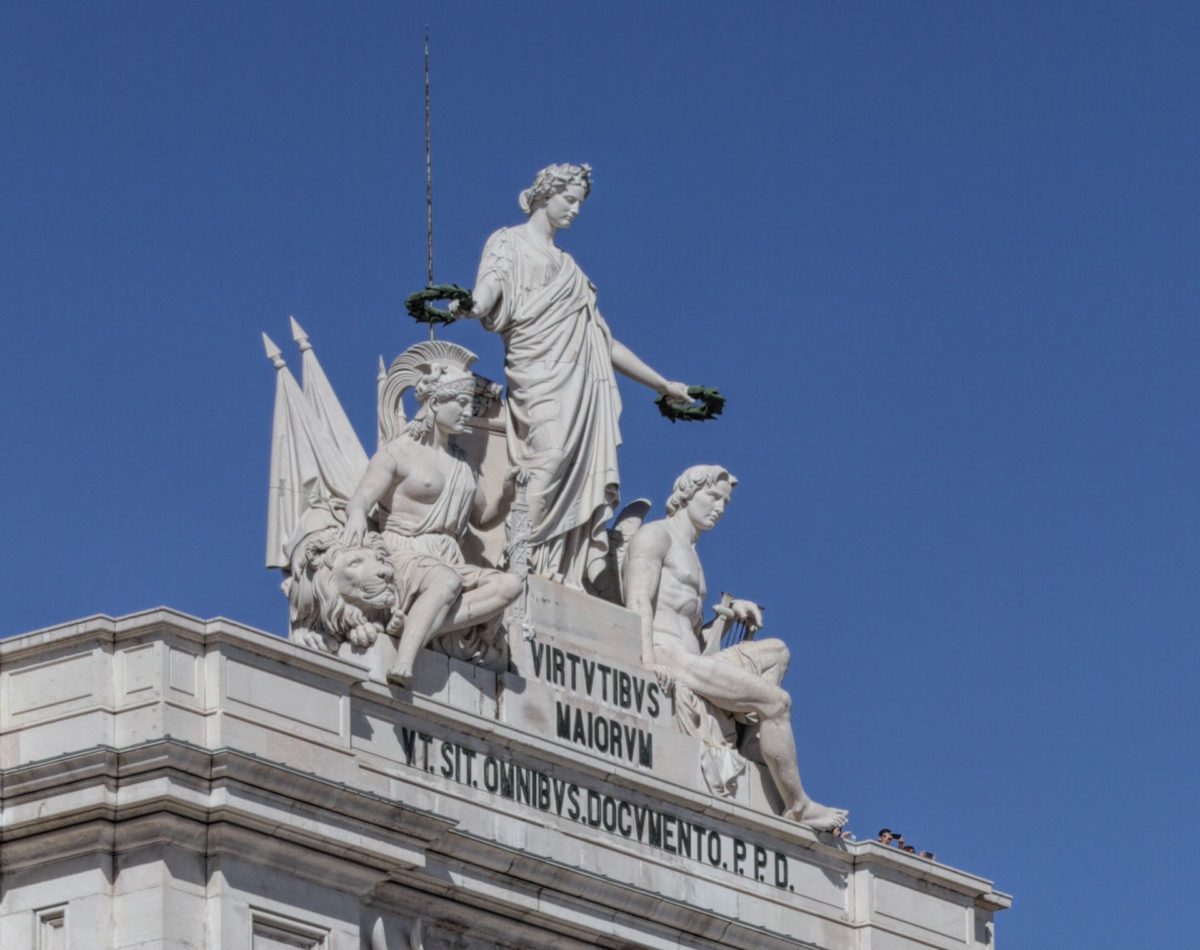
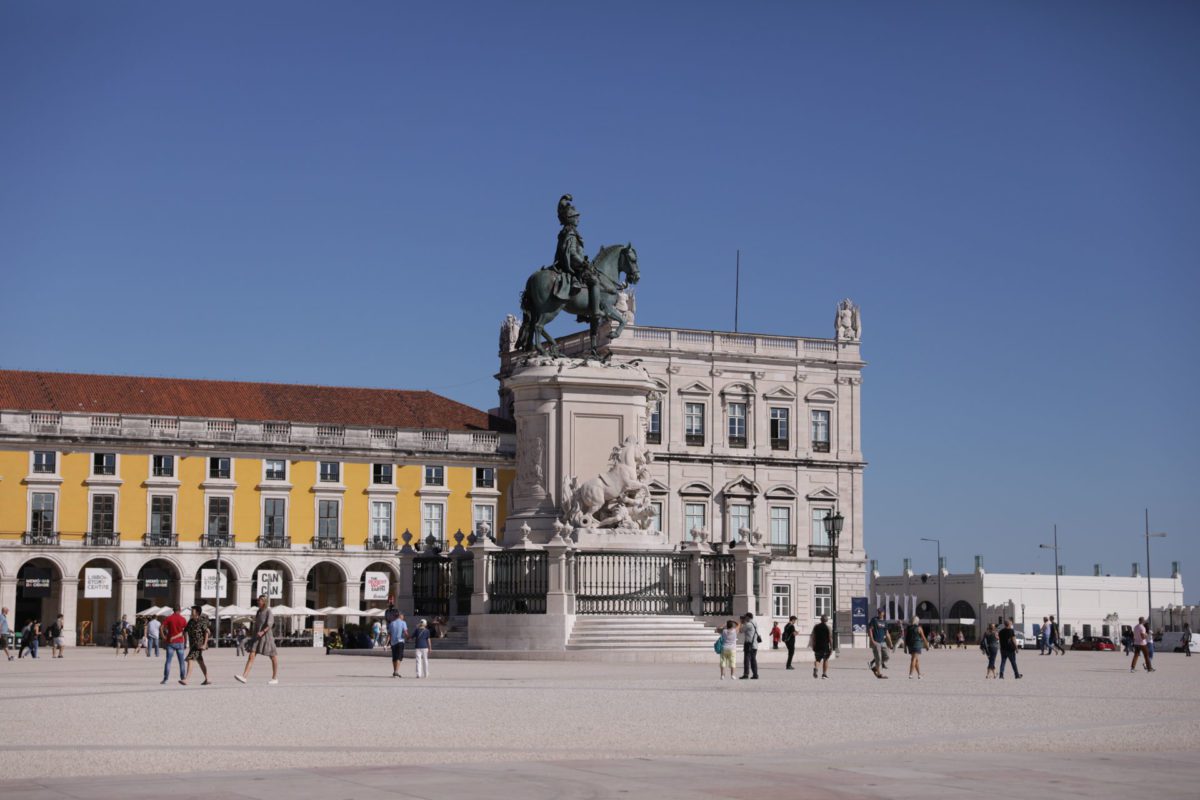
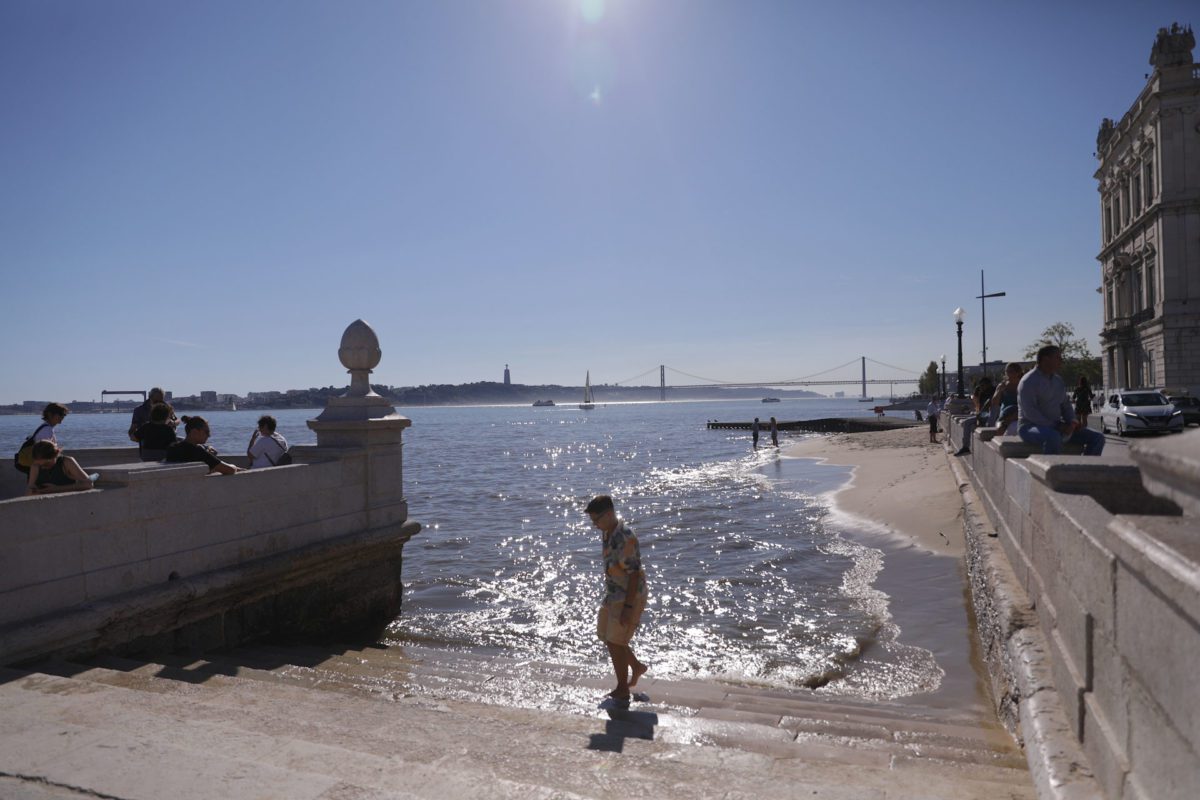
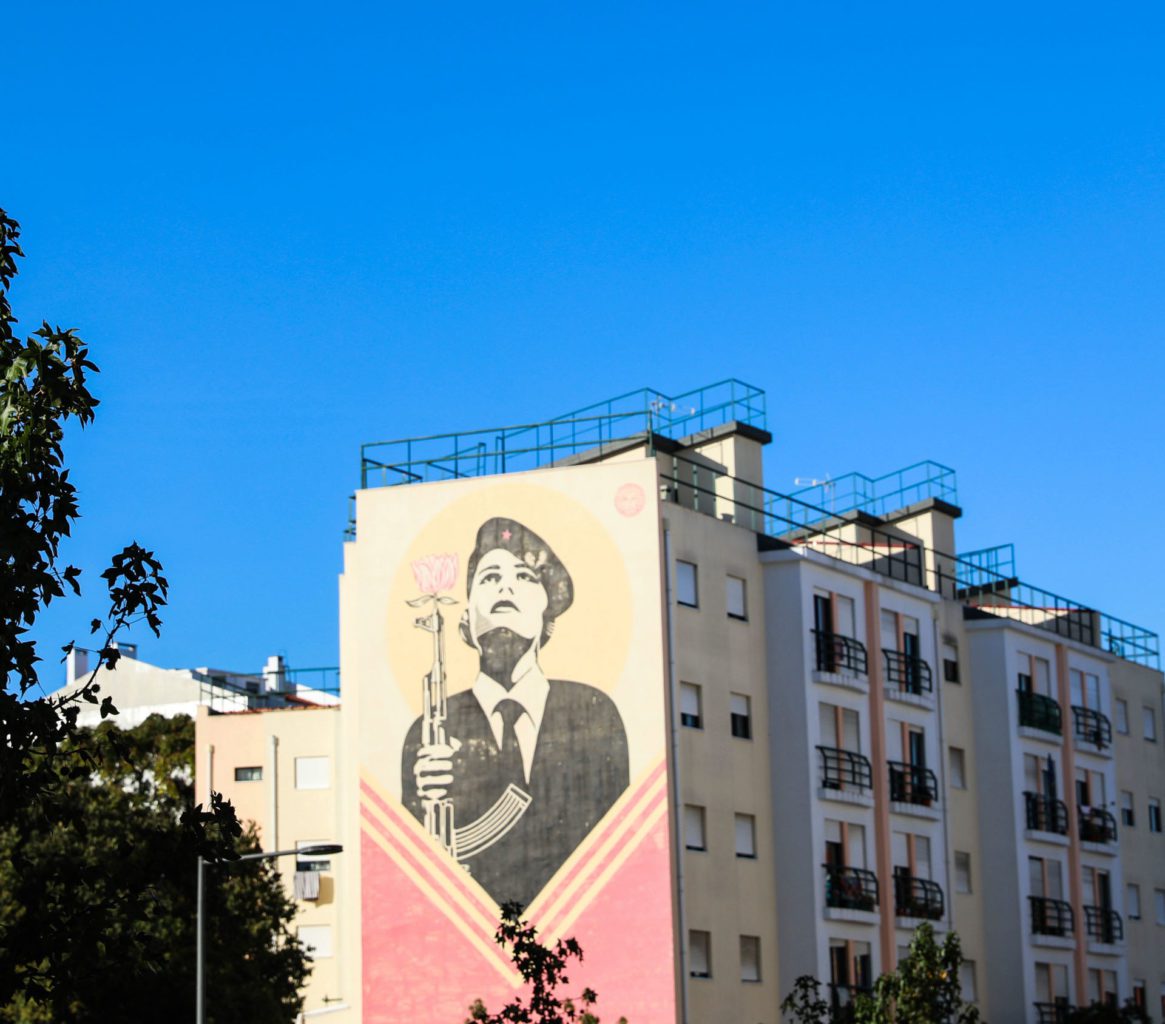
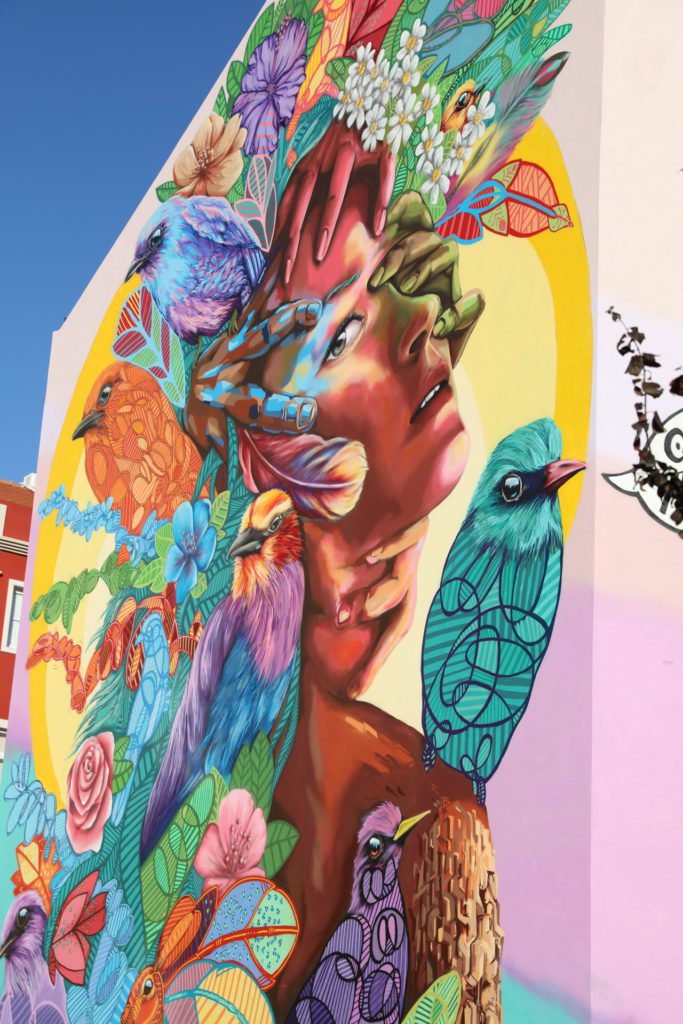
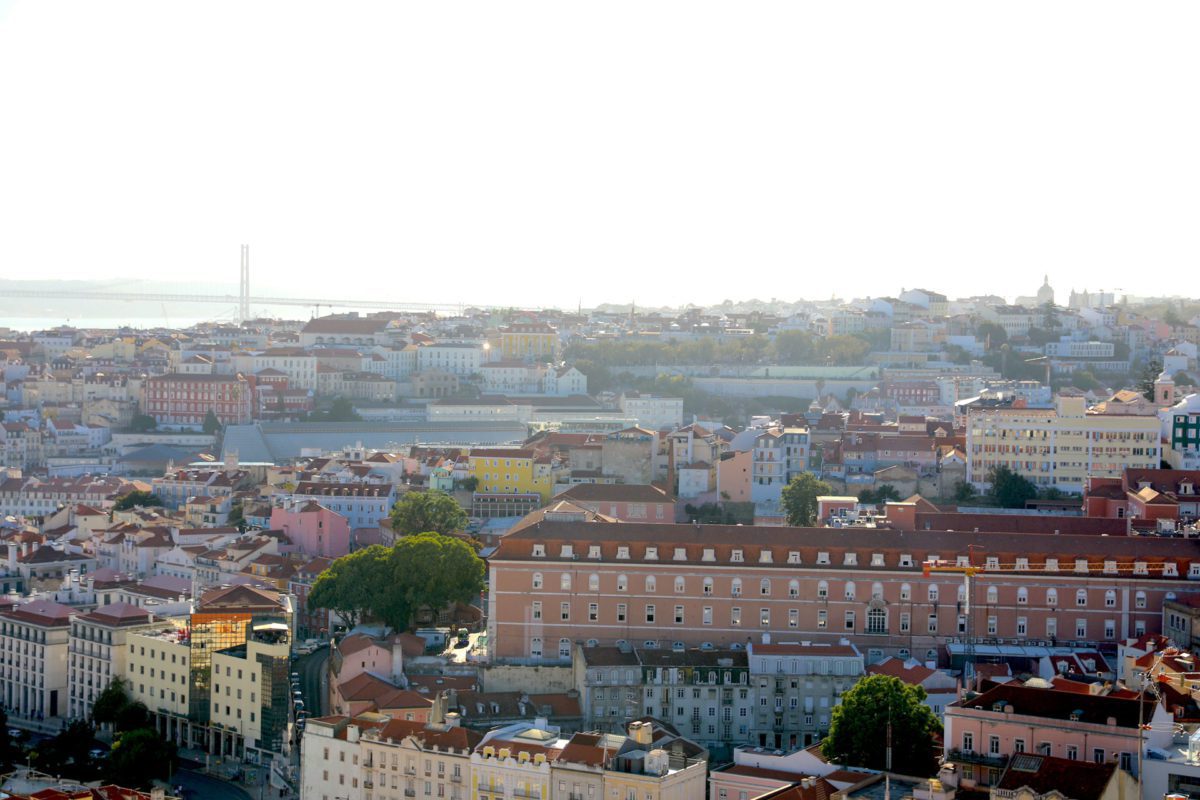
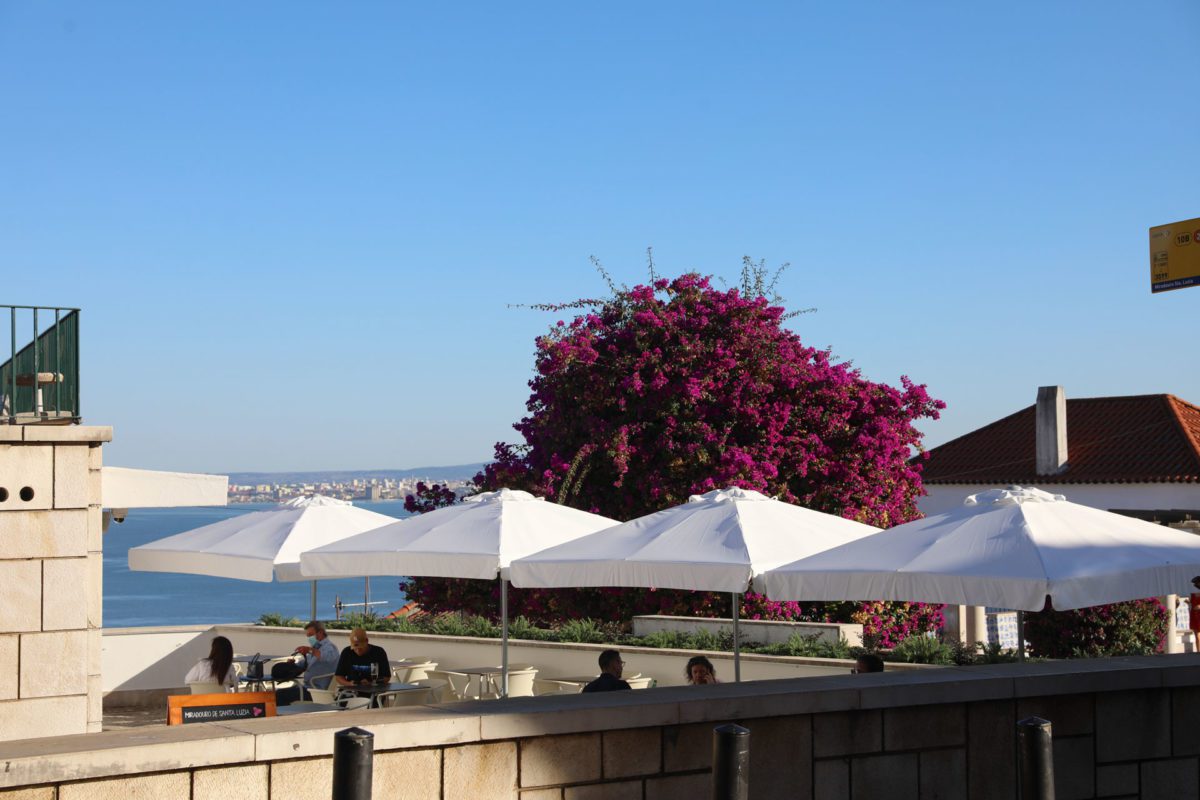

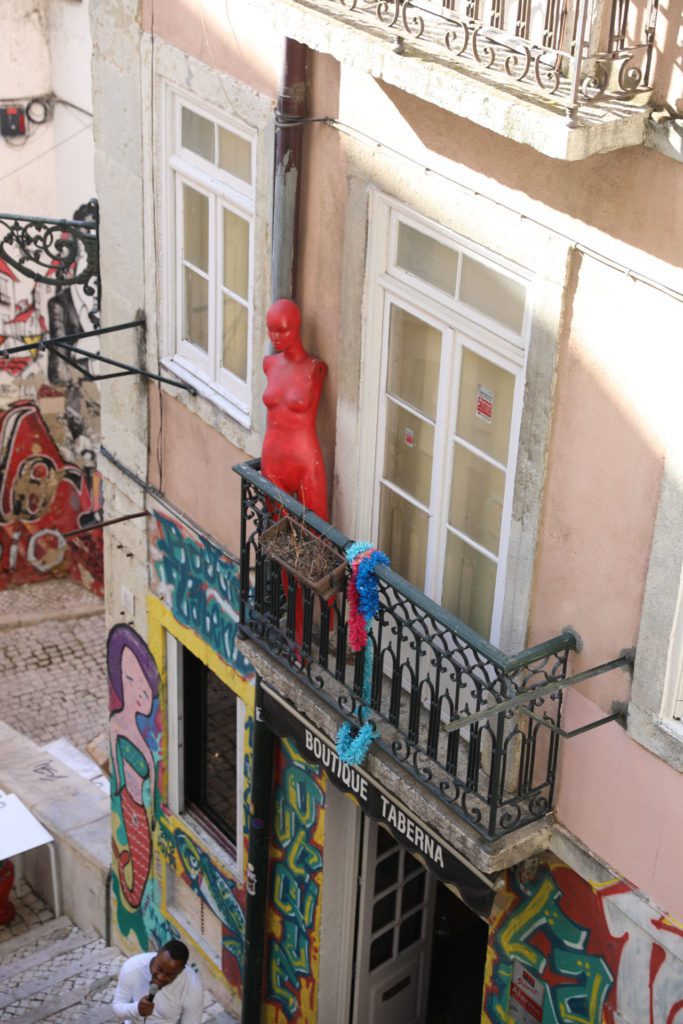
Photos by Gina Michalopulos Kingsley






















